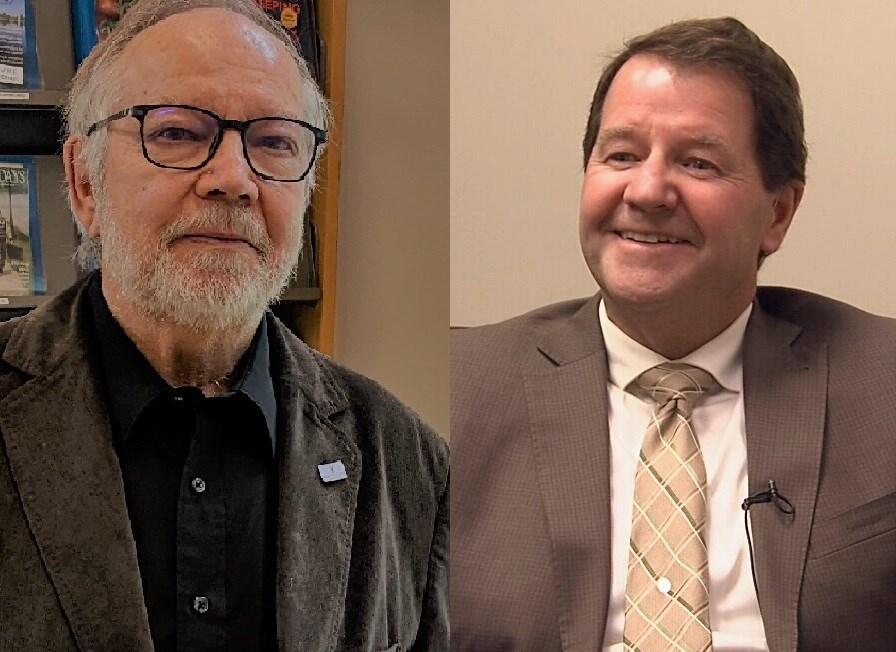The mayors of Fort Frances and Dryden say there is a lot to consider with the supervised consumption services report released by the Northwestern Health Unit.
The health unit released the report last week, which stated that four communities in the region — Kenora, Dryden, Fort Frances and Sioux Lookout — would all benefit from having supervised consumption services.
Fort Frances Mayor Andrew Hallikas said he didn’t find any surprises in the report, which he considered thorough with a solid methodology.
“I really want to compliment [the health unit] on recognizing a problem that we all see and proposing a possible mitigating solution because it's a very complicated problem. Yet they saw the problem, they proposed a solution, and then they undertook the research to look at the possible efficacy of that solution. So, good on them,” he said.
“I think it has the potential to be a catalyst and I don't want to see it go to a shelf. I want to see it stay in the forefront.”
Hallikas said he knows supervised consumption services can be a controversial topic.
“[People] might think this is just going to increase problems, but research shows otherwise,” he said. “They're going to see that a lot of research has been done and the results are positive, that [these services] work.”
He said the community needs to be educated to make sure they know how serious the problem is.
“The onus is on community leaders to do this, to educate and convince people that this is a viable strategy for reducing harms,” he said.
Some of the positives he highlighted with having the supervised consumption service as part of a harm reduction strategy is that people who use drugs will have a safe, hygienic place to use, without sharing needles, the service can help reduce the discarded drug paraphernalia in public if people who use drugs can be convinced to use it, and people using the site can be connected supports like mental health, physical health and social services.
“You're going to reduce harm to others or interaction to people in the community who feel threatened by people who are using drugs in public spaces because a lot of that goes on, and that will be reduced,” he said.
“I see benefits to our community of Fort Frances. The big one to me again is reducing overdoses and then the harms that come from overdoses including death and then reducing infections and the spread of disease among users. To get those statistics, those visits to the emergency room and those deaths due to overdoses down [is the priority].”
Hallikas said he needs some time to go through the report more fully and that he will discuss it with council, but he knows there’s a lot of work that needs to happen before any supervised consumption service could happen.
“First of all, this is a brand new possibility. Everyone has to get their heads around it,” he said. "And additional funding is also needed from either the provincial or federal governments or both he said. And it can’t be a standalone and has to be paired with other services and resources.
“I want to stress is just one part of the strategy in dealing with the opioid crisis. So it's going to take an all of community approach.”
Dryden Mayor Jack Harrison said more supports could help in his community, but he needs to learn more before he can be convinced whether supervised consumption services could be part of the solution for his city.
“I think we're getting to a point in our population where we could probably use our own detox centre. If people want to get off [addictions], get out of homelessness and the cycle of despair, a detox centre would be probably my priority and then a treatment centre to help them through that once they get through the detox,” he said. “So, I would think that, in my mind, would be a priority over anything else.”
“I mean safe consumption sites are a harm reduction method, but are they truly helping people get off the cycle of addiction?” he said. “So those are the questions, I think we need to ask ourselves. Because we have limited dollars and we got to think where's the best place we can be most effective.”
Harrison said the report was very comprehensive and that he still needed to finish reviewing the document.
“We always have to look at the pros and cons of any a new initiatives,” he said. “This report by the Northwest Health Unit really just looked at the benefits of a safe consumption site and highlighted some of the benefits like reducing hepatitis C, HIV, among people who use drugs trying to prevent overdoses.”
“There's some good benefits there, but I need to understand, what are the negative consequences of having a safe consumption site within our city?” he said, comparing it to a coin with two sides.
“So before I can really make any judgment on it, I need to understand the other side of the coin,” he said.
